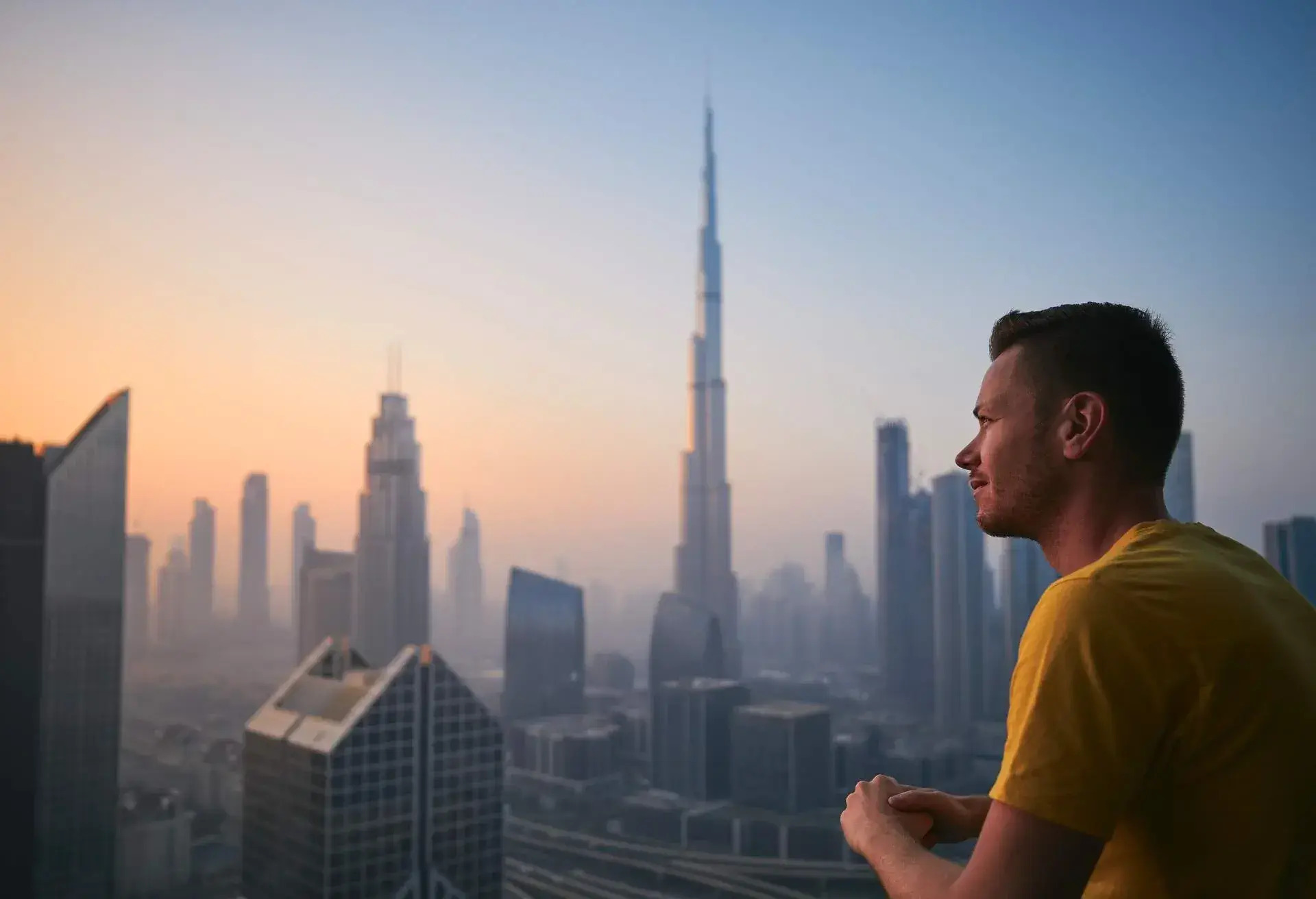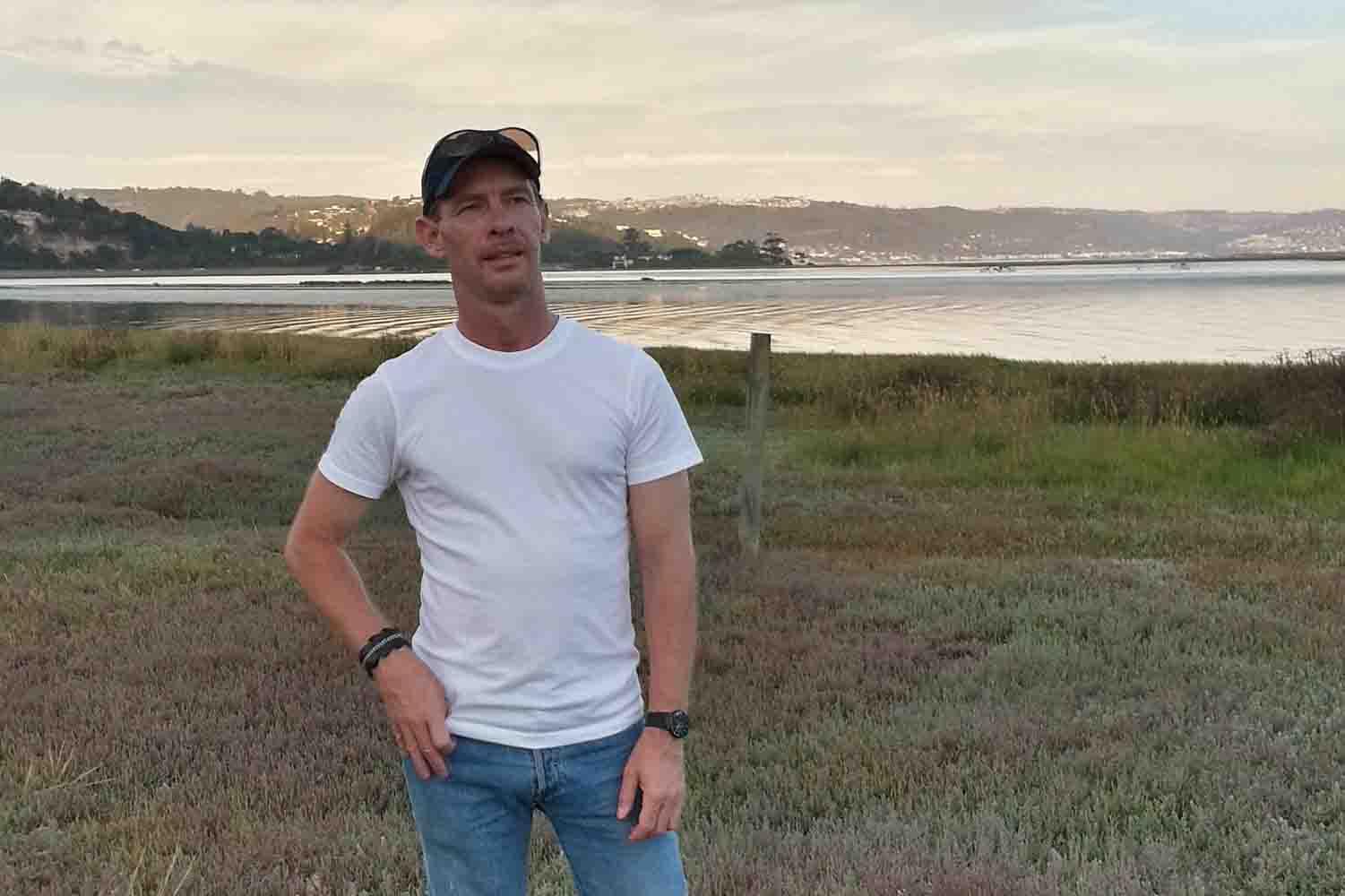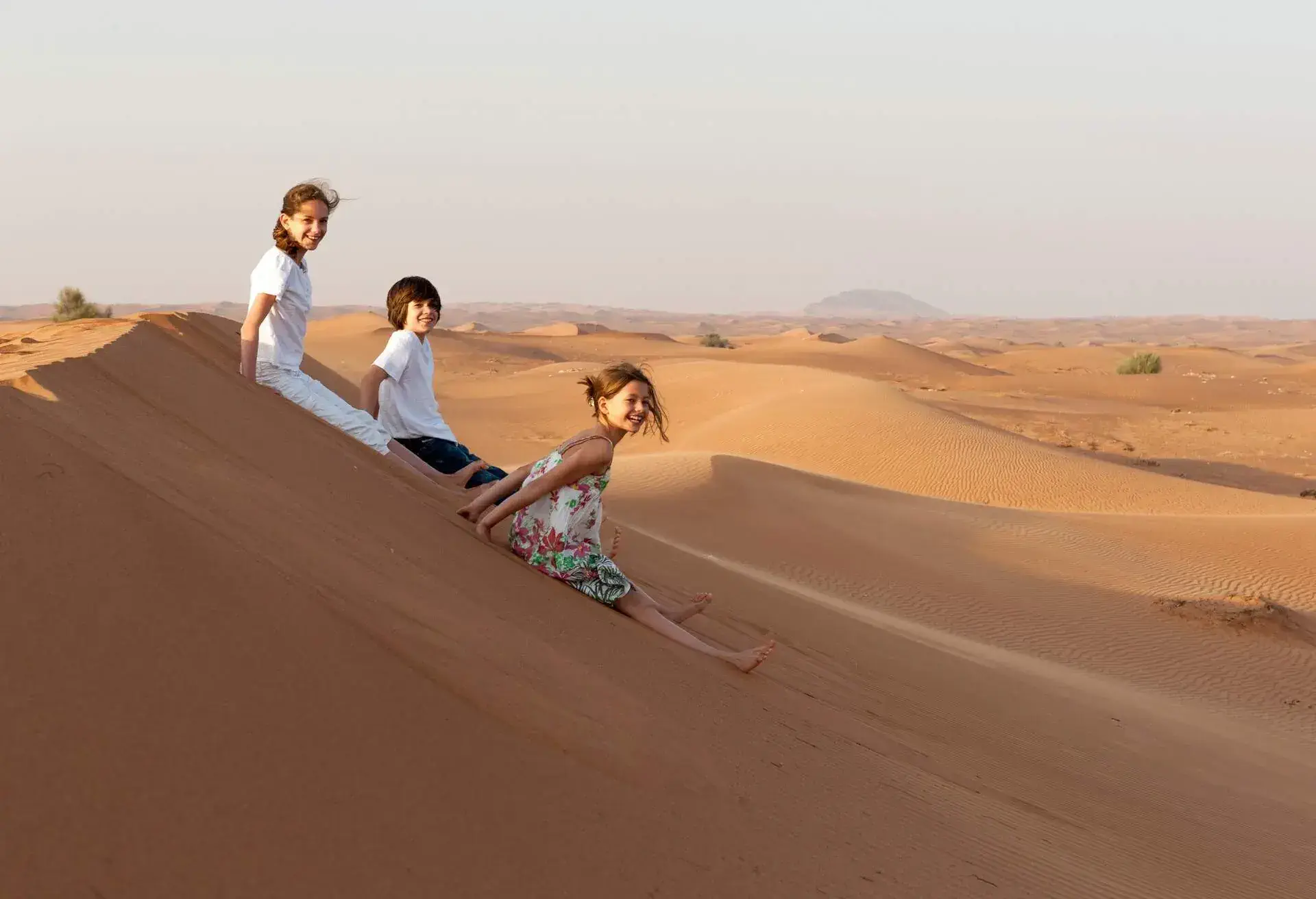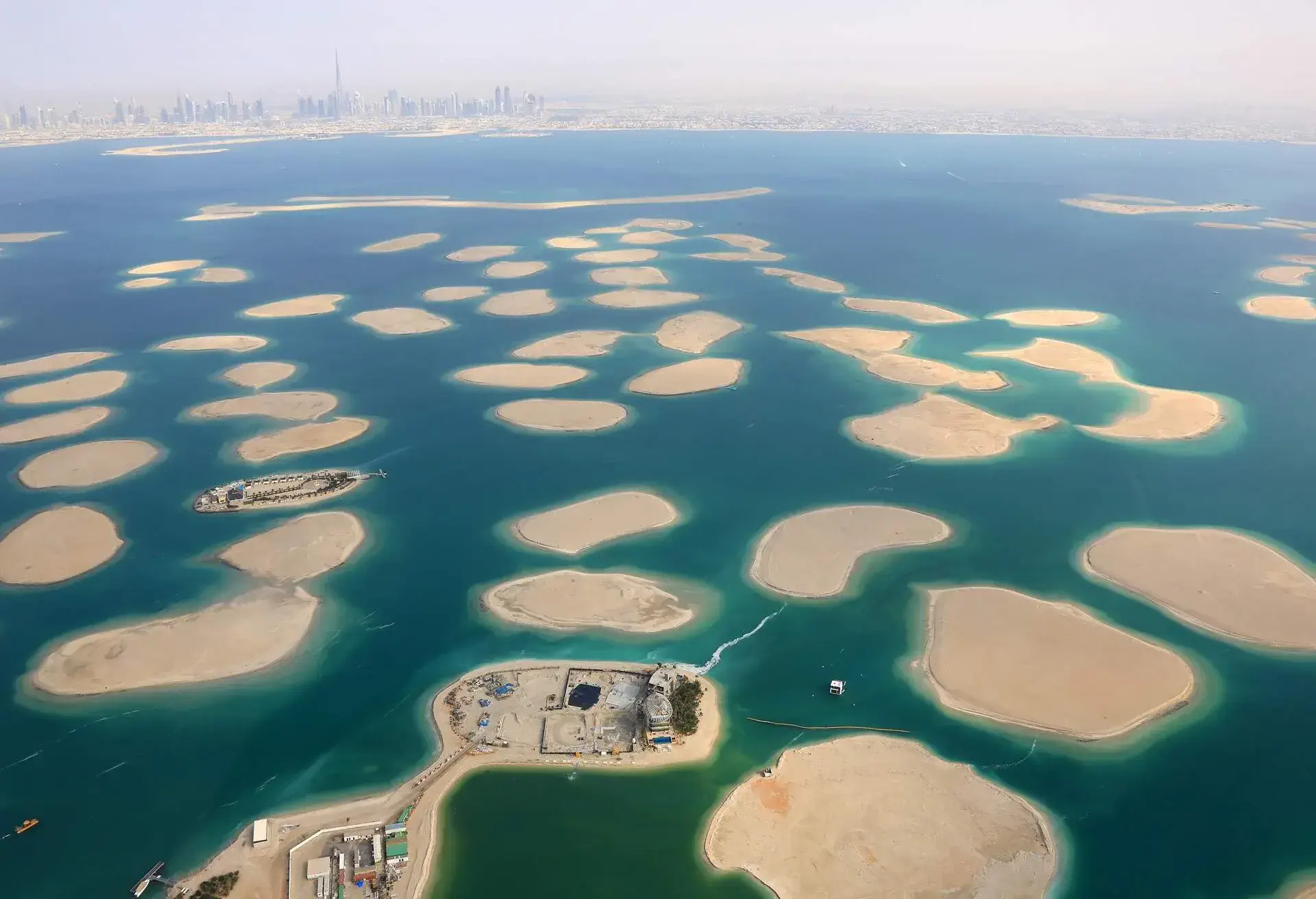The architecture of Dubai is the city’s global emblem. The images we conjure of Dubai invariably involve the world-famous buildings that create its skyline. There’s the paradigm-shifting sail-boat shape Burj Al Arab with its helicopter pad where celebrated golfers take tee shots for publicity photos.
More recent architectural wonders have come in the form of the world’s tallest skyscraper, buildings that look more like optical illusions, and ones with holes in them that you could fly a small aeroplane through. From the first buildings that put Dubai on the world architectural map to the most recent awe-inspiring creations, and some lesser-known ones – let’s have a closer look at the architecture of Dubai.
1. Burj Khalifa – the crown jewel of the architecture of Dubai
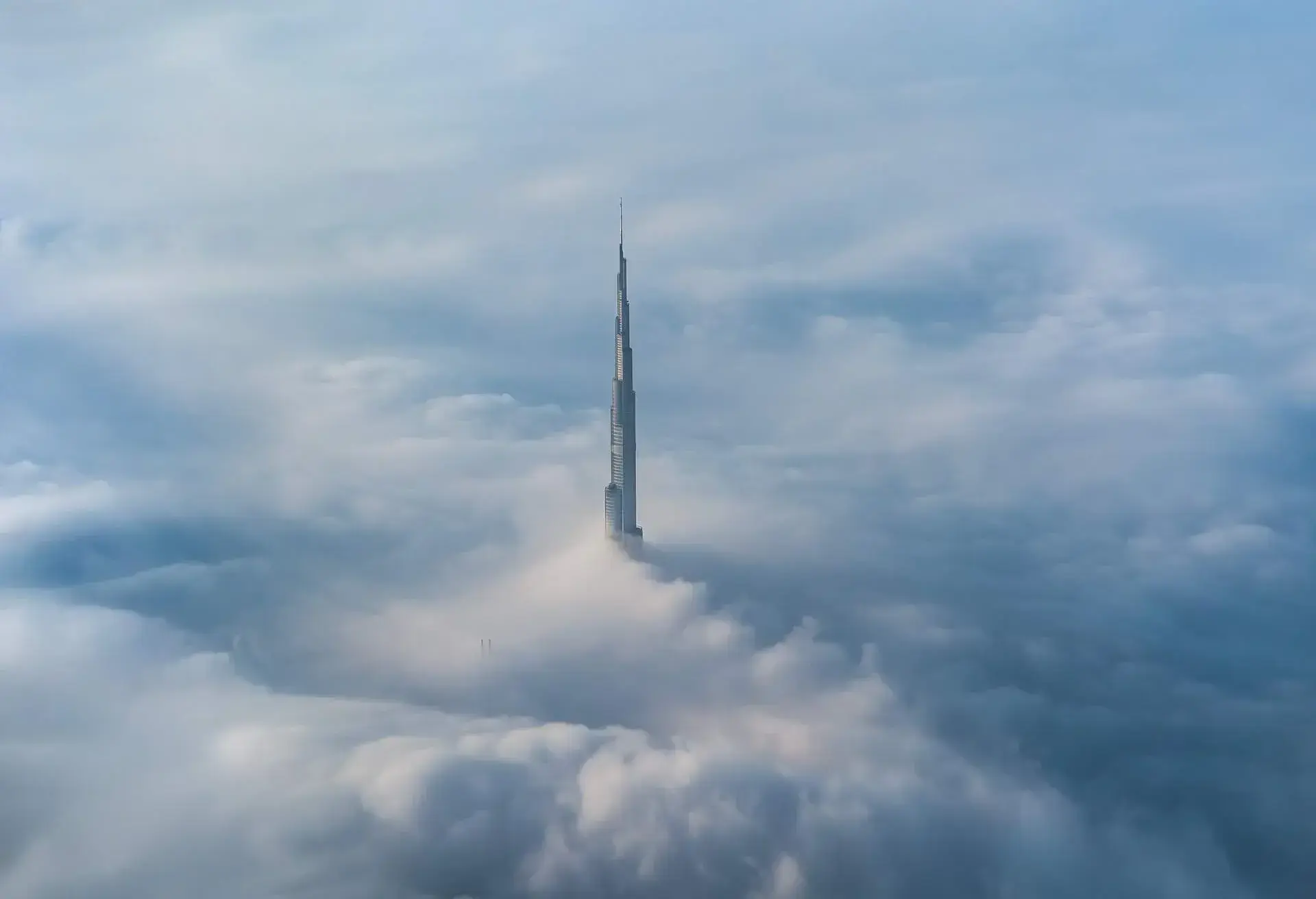
There’s no doubt that the Burj Khalifa earns the most bragging rights for the architecture of Dubai. It’s the tallest building on the planet, soaring over 2500 feet into the sky. From there, other records start falling like dominoes.
It has the world’s longest elevator track and the highest observation deck on Earth lies at the very top. It takes its spiral shape from the Great Mosque of Samarra, an icon of historical Islamic architecture,
How to get to Burj Khalifa
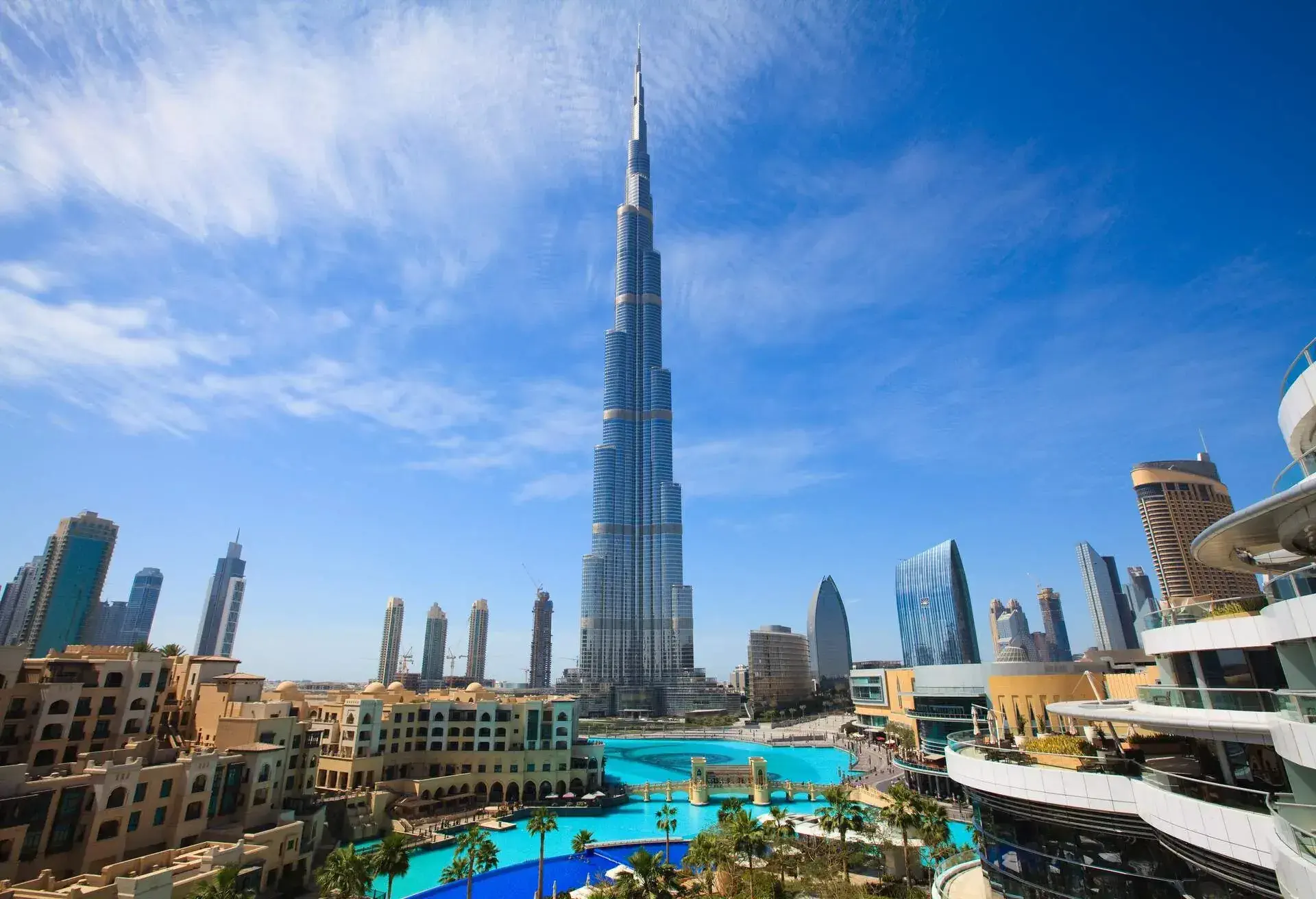
You’ll find it in downtown Dubai on Sheikh Mohammed bin Rashid Boulevard. Take the Dubai Metro Red Line, which will put you at the Dubai Mall, so you can explore this other spectacular building before reaching the Burj Khalifa entrance.
2. Burj Al Arab
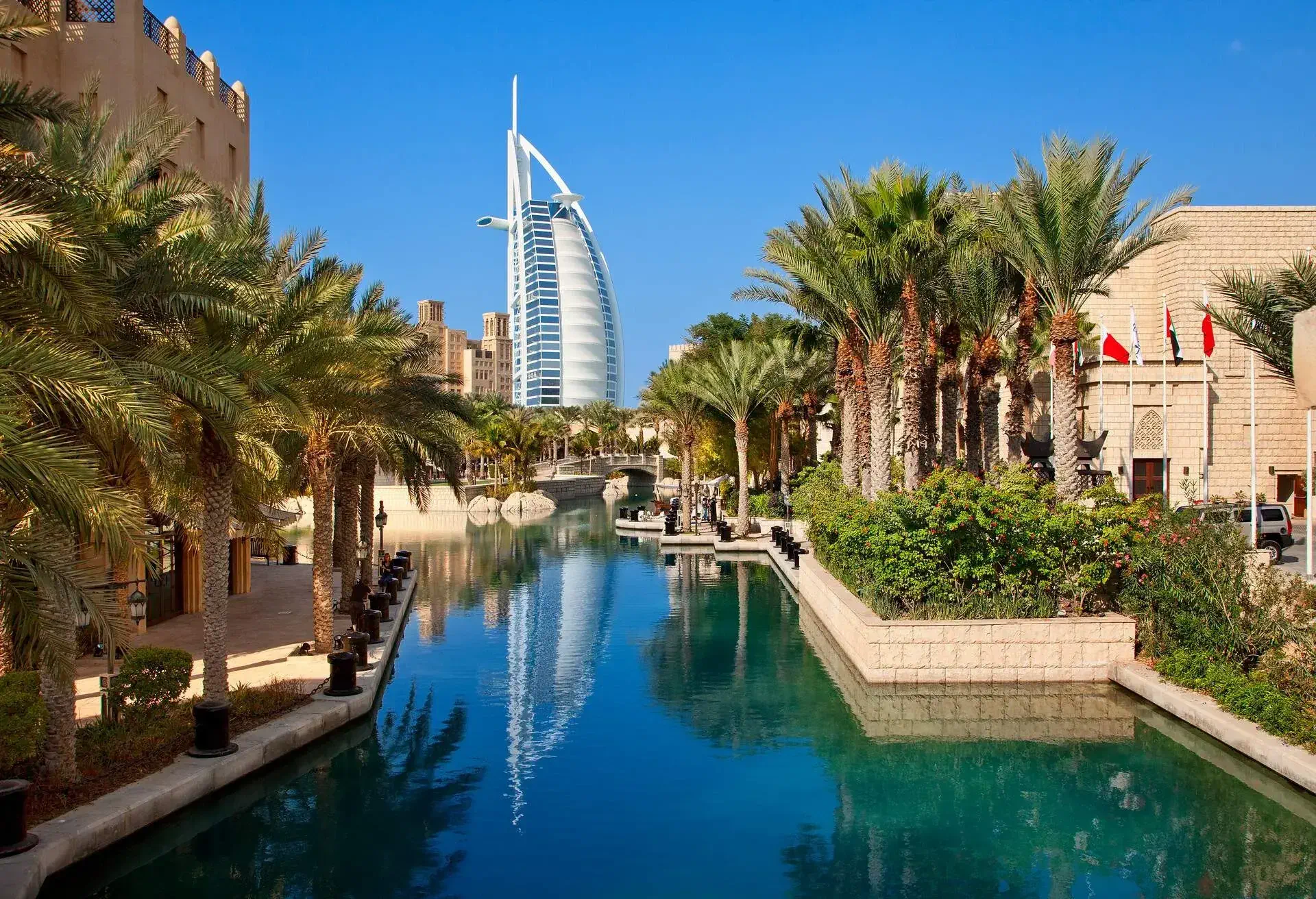
This is probably the star attraction of architecture of Dubai. It’s the one we all picture when we think of the city: the hotel shaped like a ship’s sail that’s featured in countless photos of the city.
Ground-breaking luxury with iconic features
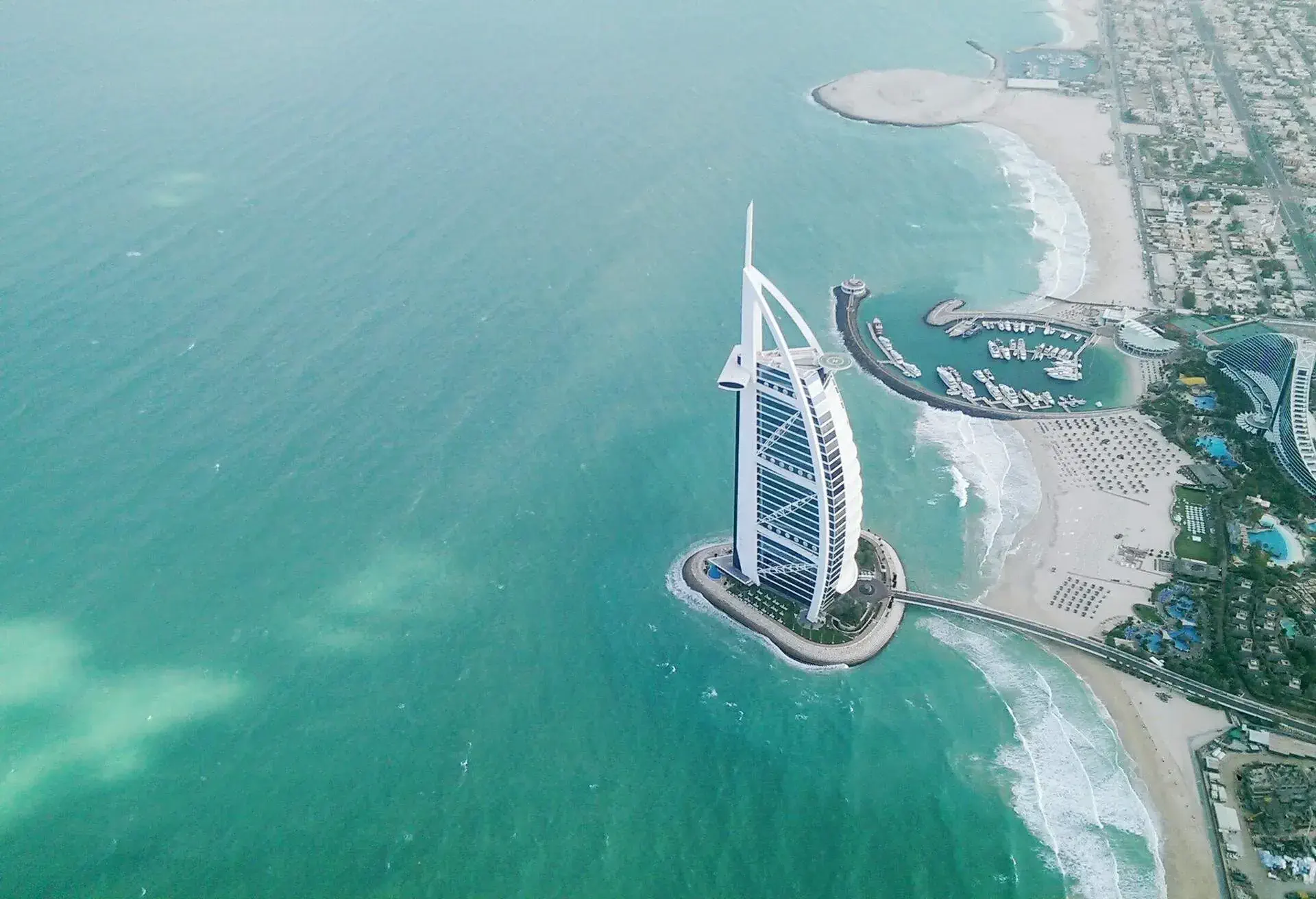
Its other significance is that it was the world’s first 7-star hotel. It contains a huge 18-storey atrium, and its helipad is a favourite setting for everything from golf stars teeing off for charity to luxury adverts.
A little-known fact about Burj Al Arab is that glass screens that protect the hotel from the harsh desert sun are actually coated with Teflon. This serves to stop sand from spoiling the building’s exterior sheen. You’ll find it on the Umm Suqeim beachfront road.
3. Jumeirah Emirates Towers
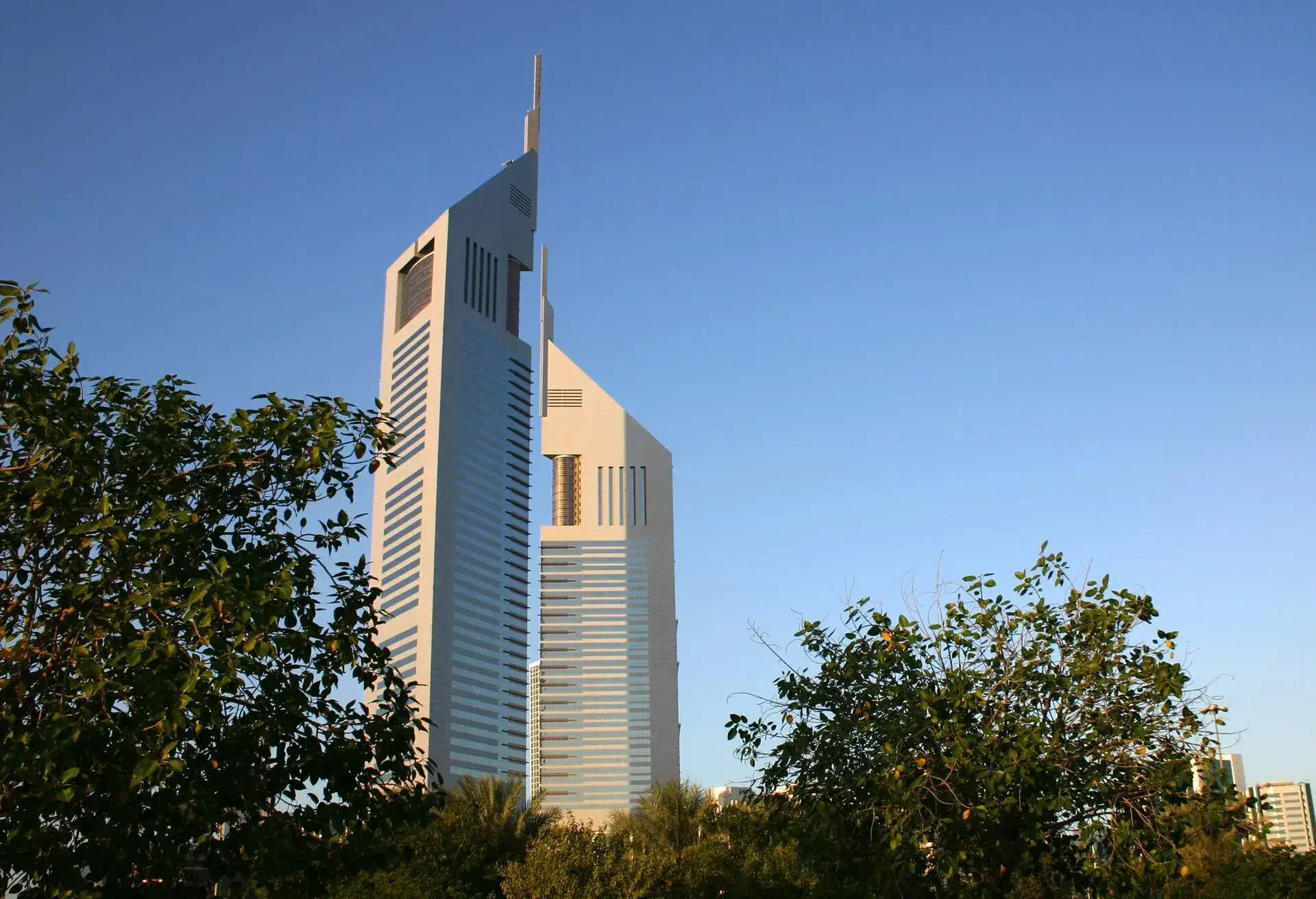
The Jumeirah Emirates Towers are two other familiar features of Dubai’s skyline. They’re the twin angular buildings with equilateral triangles at the top. Their facades are covered with copper reflective glass and silver aluminium panels, creating a glittering feature of the architecture of Dubai.
A first for female architecture in Dubai
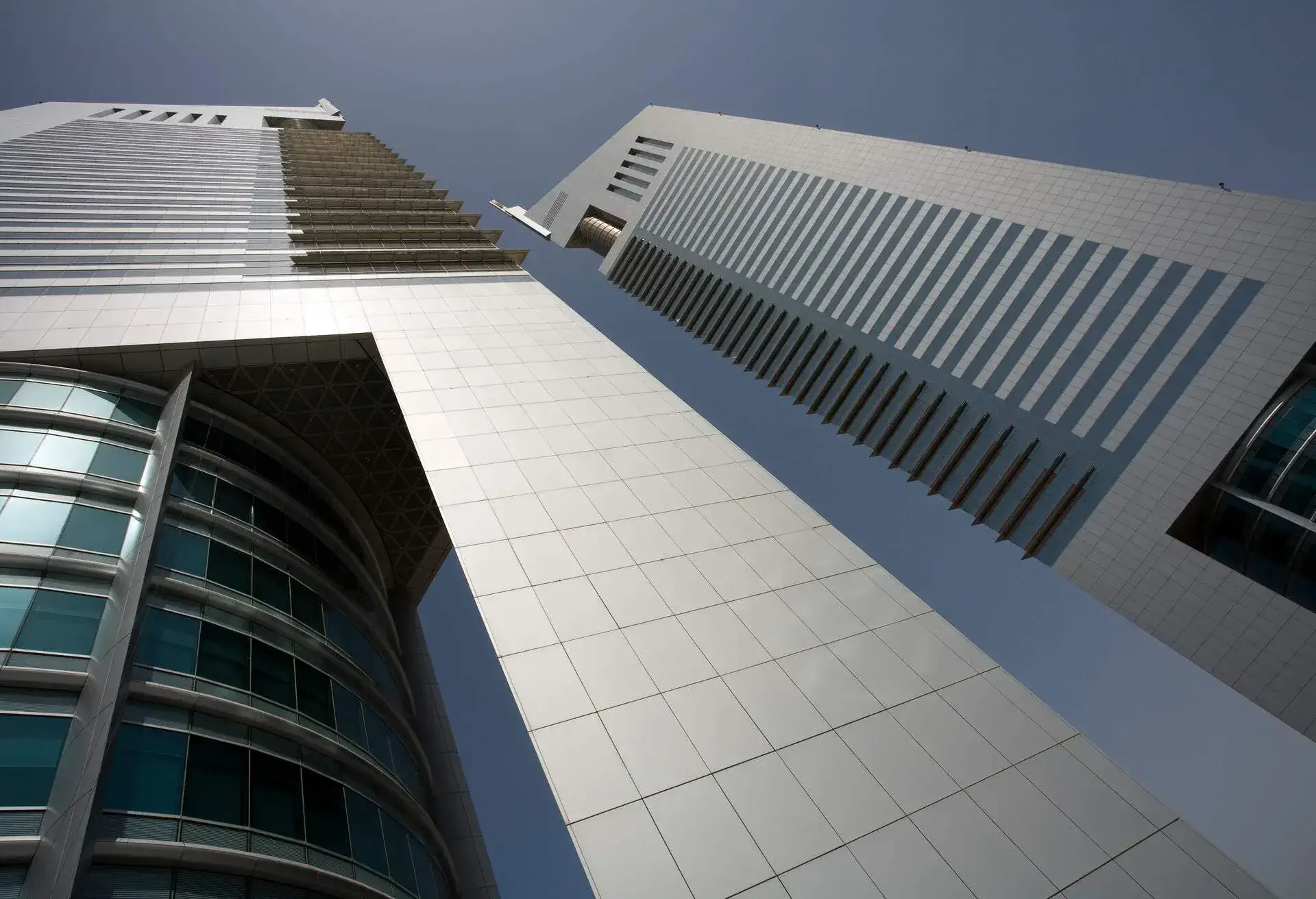
Tower One is dedicated to office space, with Tower Two containing a luxury hotel. You’ll find them on Sheikh Zayed Road, one of the city’s busiest. When they were built, they were the tallest skyscrapers in the world designed by a woman architect.
4. The Infinity Tower (Cayan Tower)
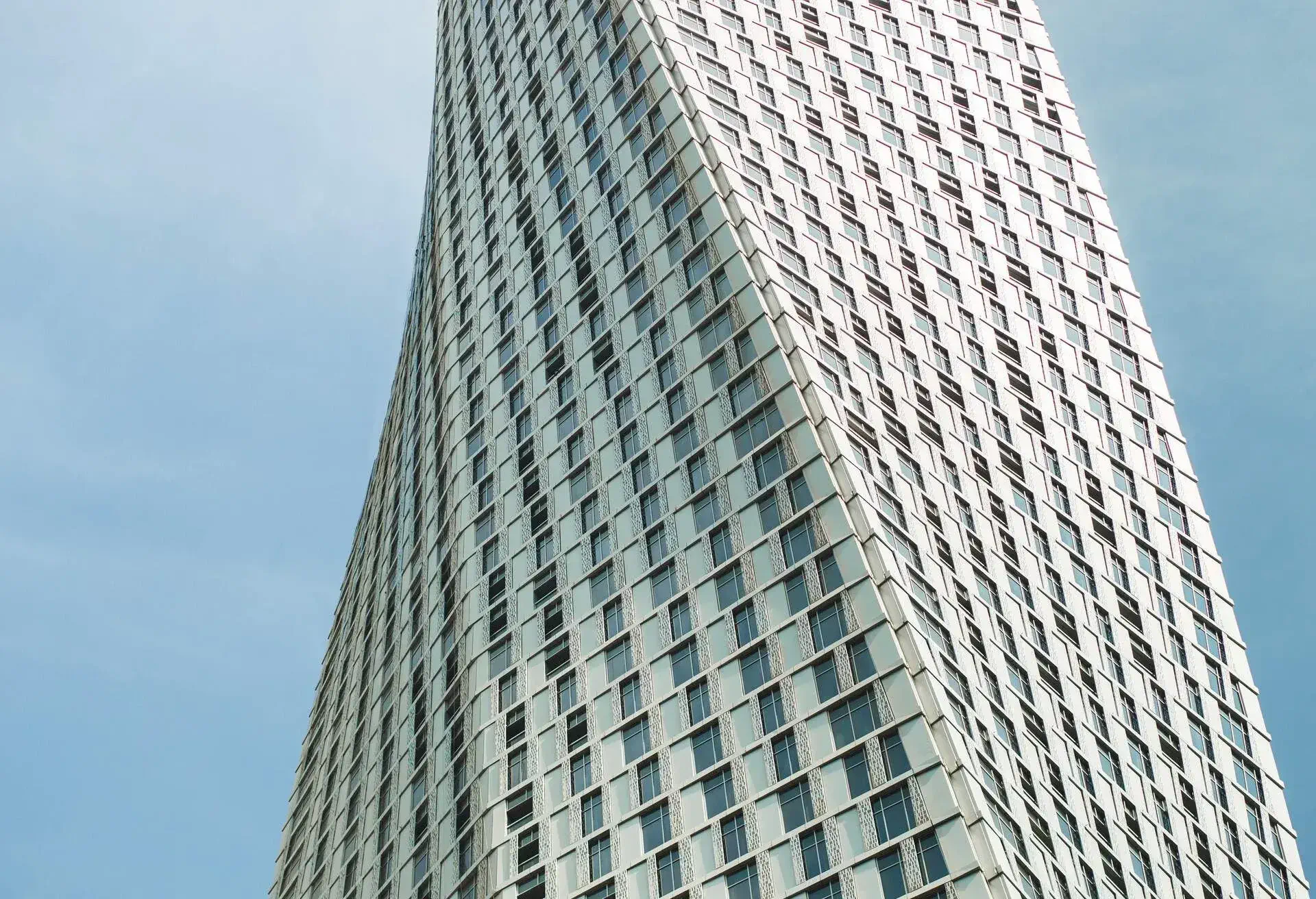
The Cayan Tower, or Infinity Tower, is an impossible-looking twisted building that defies much of what we’ve come to expect from skyscrapers. It turns through a full 90 degrees from bottom to top, with beautiful smooth curves.
Seeming to defy gravity
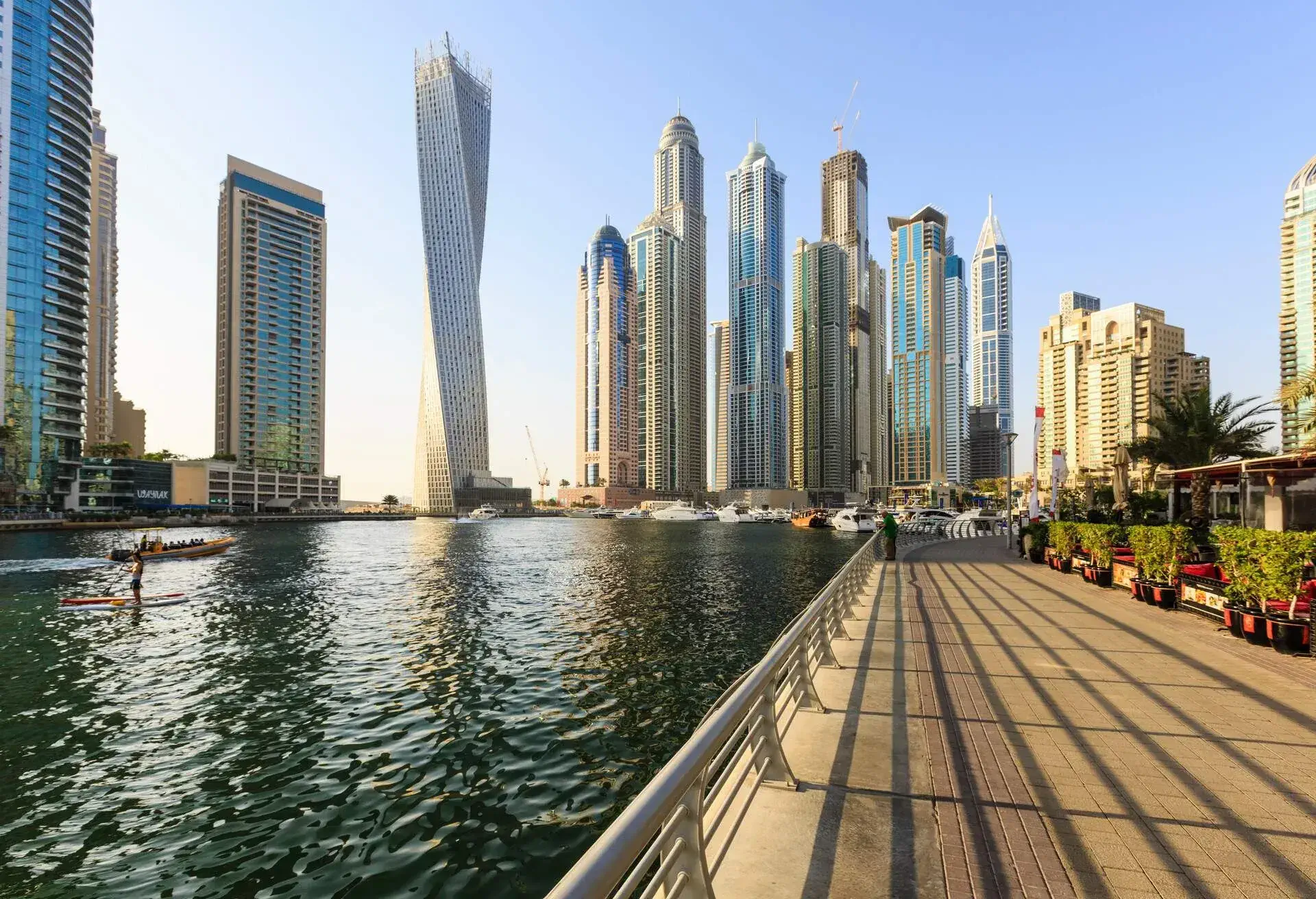
This twist was created by rotating each floor a metre or so clockwise from the one below – for 75 storeys. It look simultaneously solid and about to fall over. Paradoxically, its shape minimises the impact of higher altitude winds, creating an even more stable building.
You’ll find this fine example of the innovative architecture of Dubai at Al Barsha Heights in the Dubai Marina area.
5. The Opus
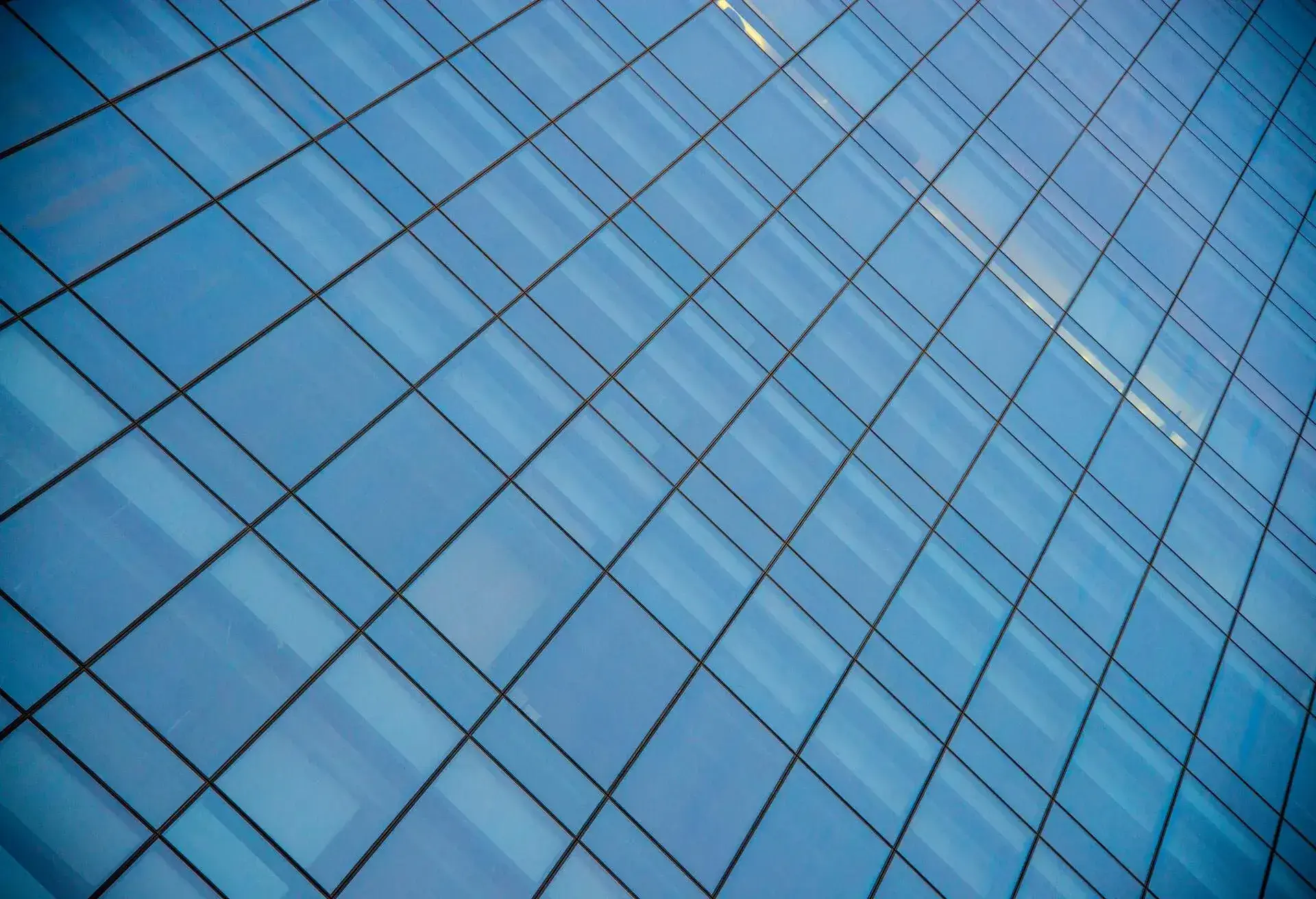
The Opus is one of the most spectacular examples of the inventive modern architecture of Dubai. It’s virtually impossible to describe, but imagine a cube with an irregular hole in the middle that looks like it was melted by a huge blowtorch to form a fluid void.
The building that never sleeps
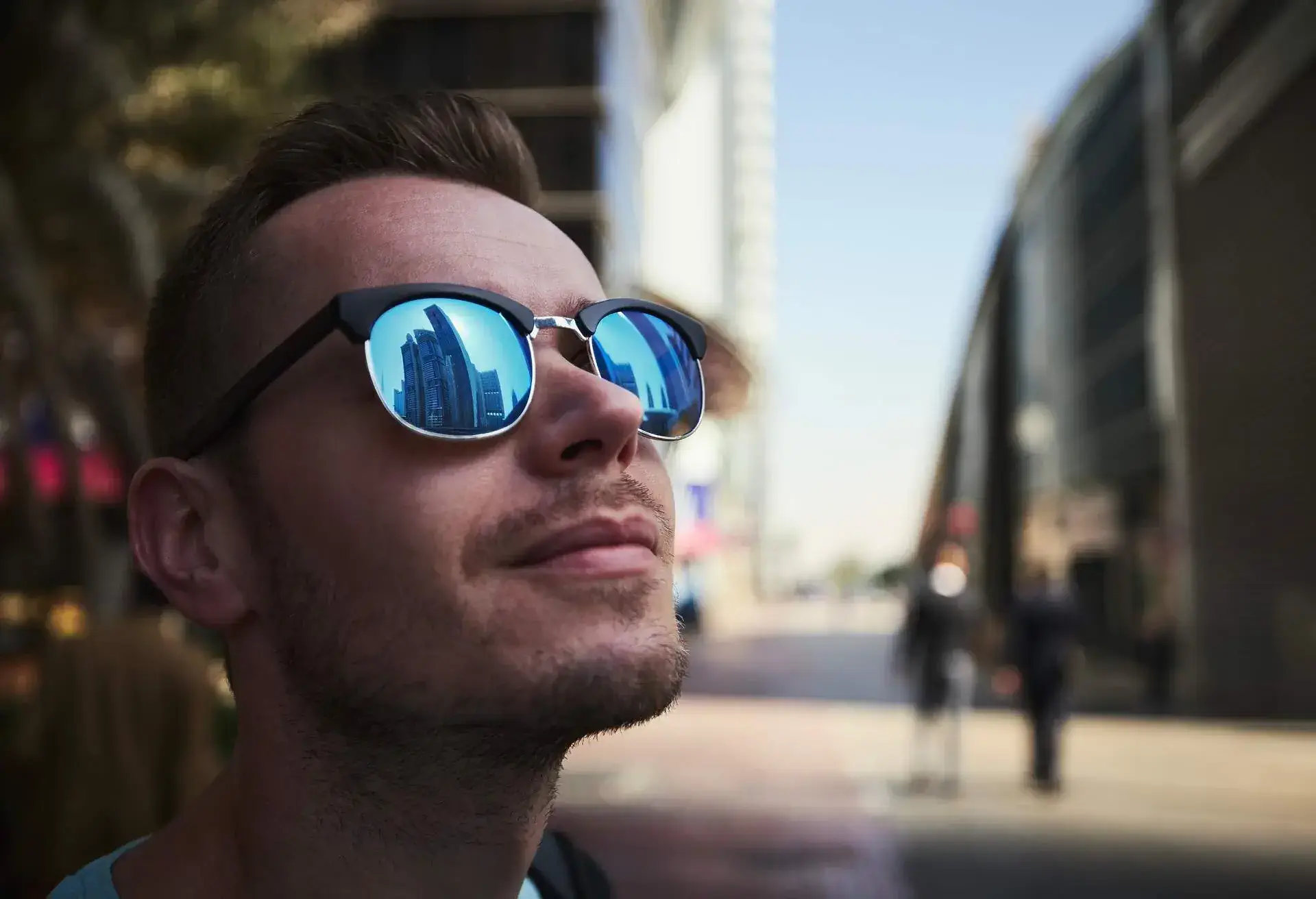
It’s known locally as “the building that never sleeps”, on account of its multi-functional purpose. It contains private residences, restaurants, business offices and a hotel. You’ll find The Opus in the Business Bay district of Dubai, on Al Amal Street.
Another distinctive feature of The Opus is that it’s the only building in Dubai designed by Dame Zaha Hadid, one of the region’s most celebrated and visionary architects.
6. Jumeirah Mosque
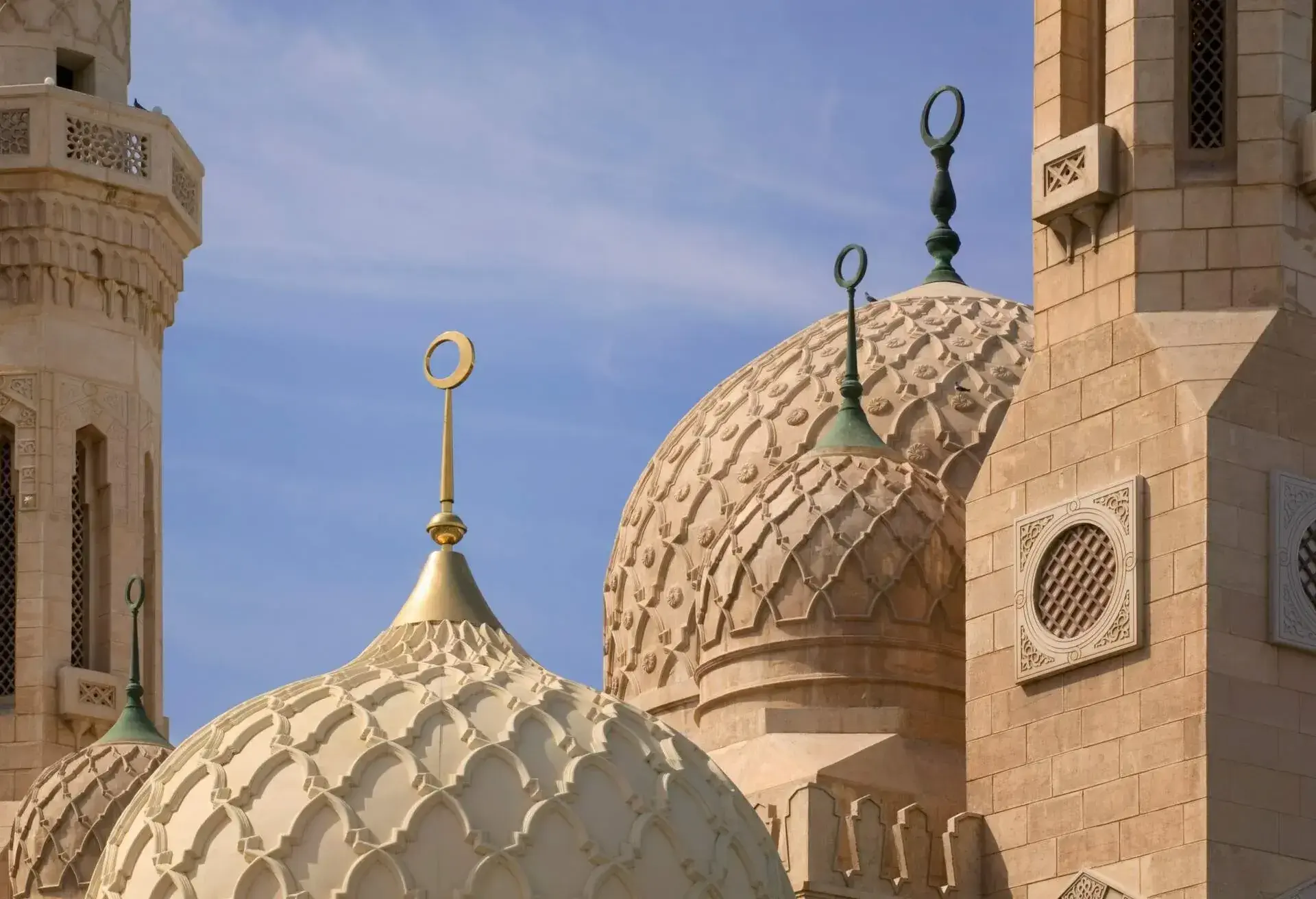
Here’s an older building that showcases the traditional side of architecture of Dubai. Built in 1979, it’s rich ivory-coloured stones turn gold at sunset. It has two medieval-looking spires, as it’s designed in the Fatimid style of architecture typical of that period.
A rare chance to see inside a mosque
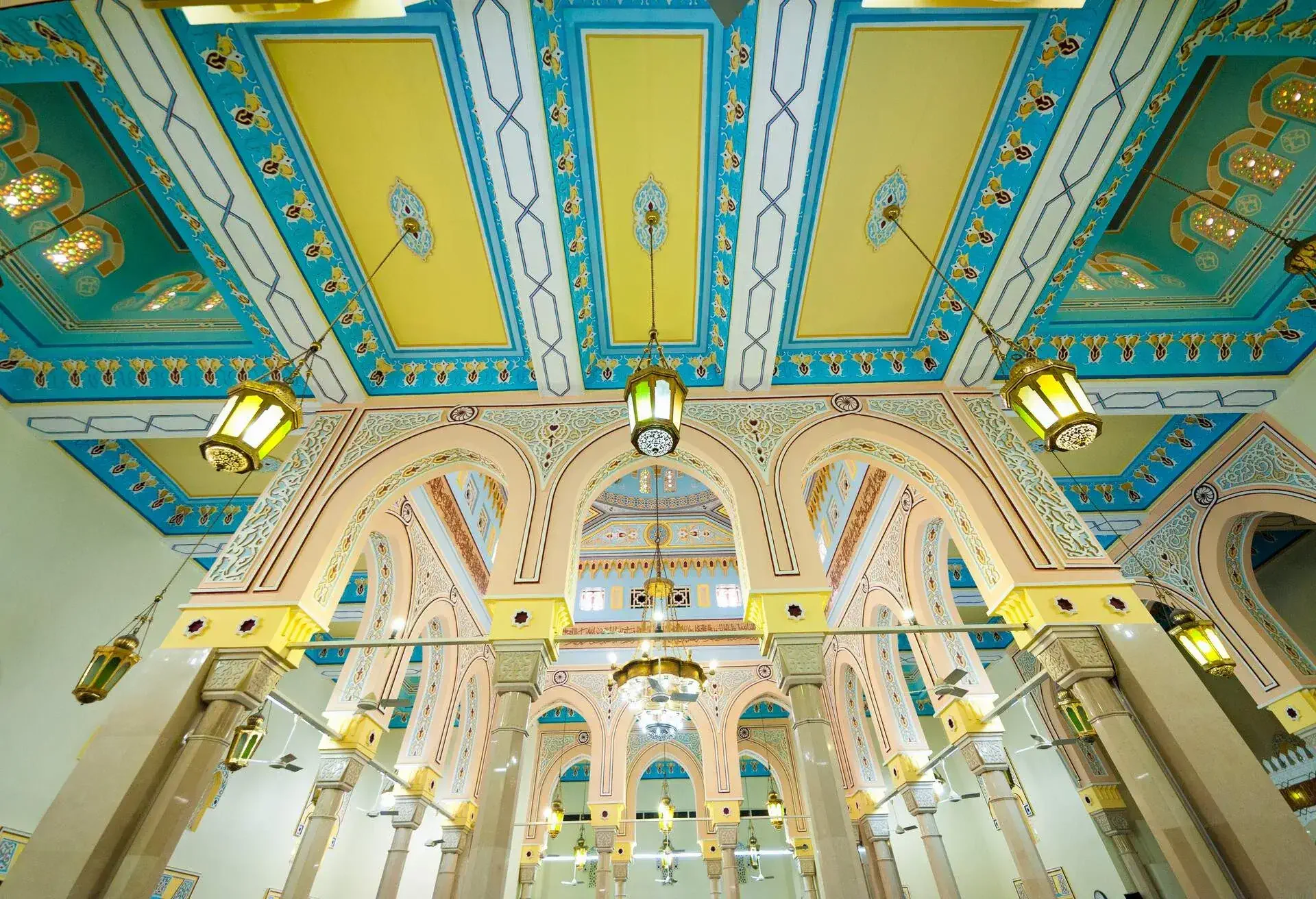
It’s also one of the most unusual mosques in the world, in that non-Muslims are allowed to enter it, the building having become such a tourist attraction. For this reason it’s also part of the city’s “Open Door Open Minds” programme.
Jumeirah Mosque is free to enter, or you can pay for a guided tour. You’ll find it on Jumeirah Road itself, and you can walk there from Al Jagiliya Metro Station. You can also find it on the 500 dirham note used in the UAE. It’s one of the city’s most revered landmarks.
7. Deira Clock Tower
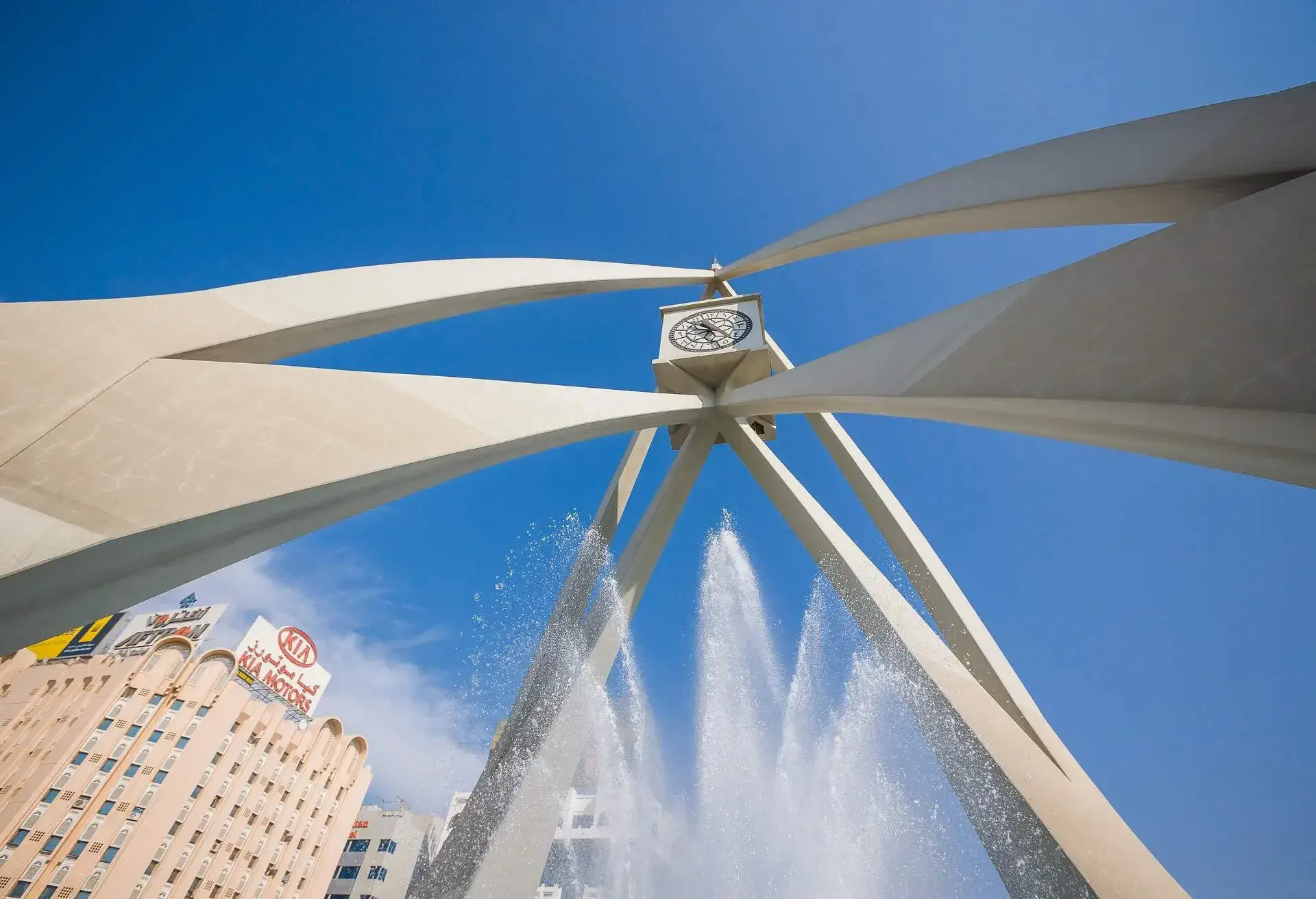
Easy to miss among the city’s more famous buildings, Deira Clock Tower is a decorative roundabout in eastern Dubai. It’s a structure that creates the most nostalgia in the architecture of Dubai, due to its historical significance and the story attached.
All roads led to Dubai
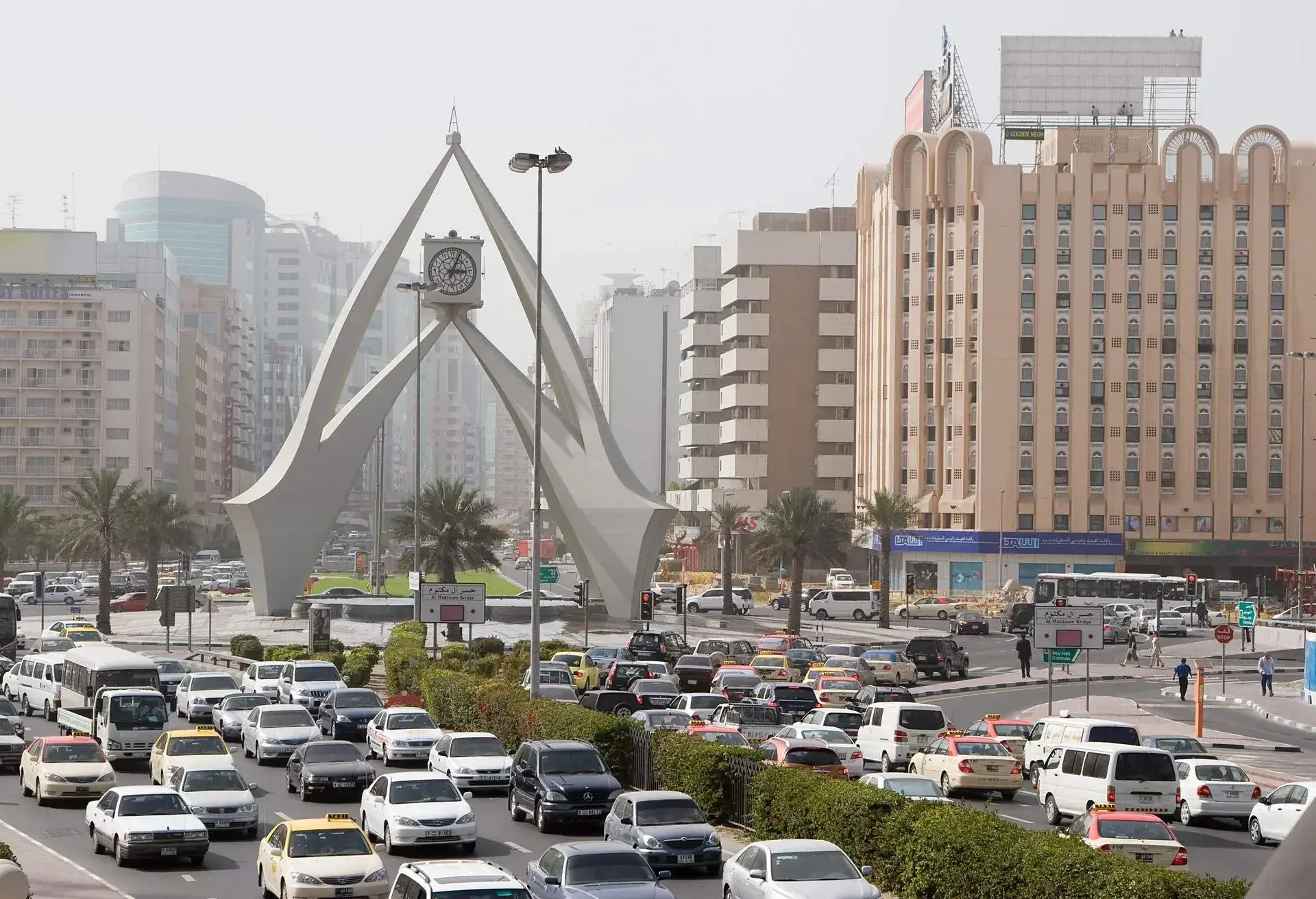
It’s a highly symbolic tower, built as a symbol of Dubai in 1965 at the point where all the roads into the city converged before the highway linking Dubai with Abu Dhabi was built. The clock itself was a gift to the then ruler, Shaikh Rashid. Not knowing what to do with a clock of this size, he commissioned the monument as a place to put it.
The construction comprises several arches converging on a clock at the top, with a fountain in the middle. You’ll find it in the Al Rigga part of the Deira district, at the intersection of Al Maktoum Road (the D89) and Umm Hurrair Road.
8. The Green Planet
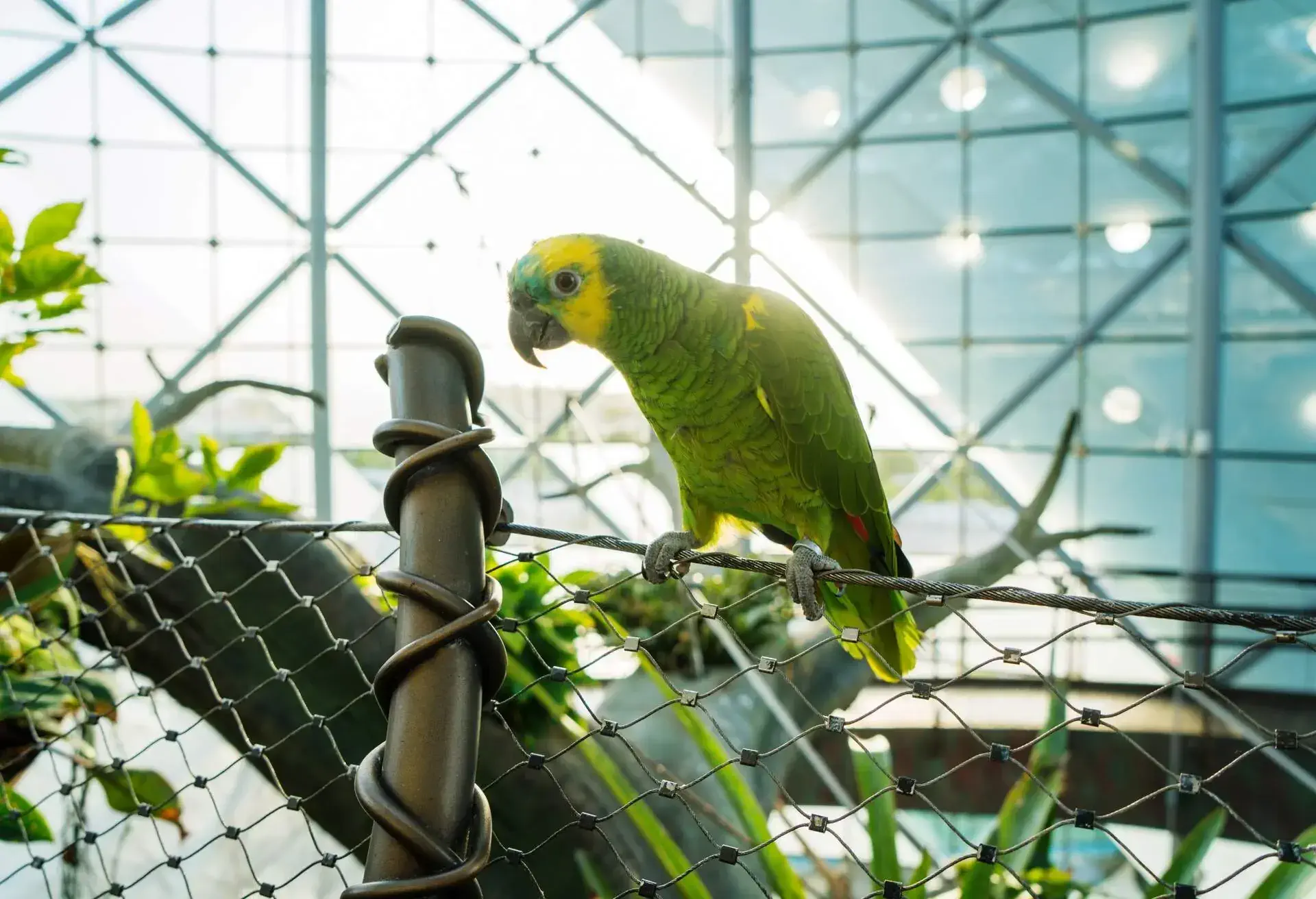
The Green Planet is a relatively insignificant building among the architecture of Dubai in terms of sheer scale. Its modest four storeys make it almost seem like a miniature. Once you draw closer however, you’ll start to discern just how striking it is.
A rainforest in the desert
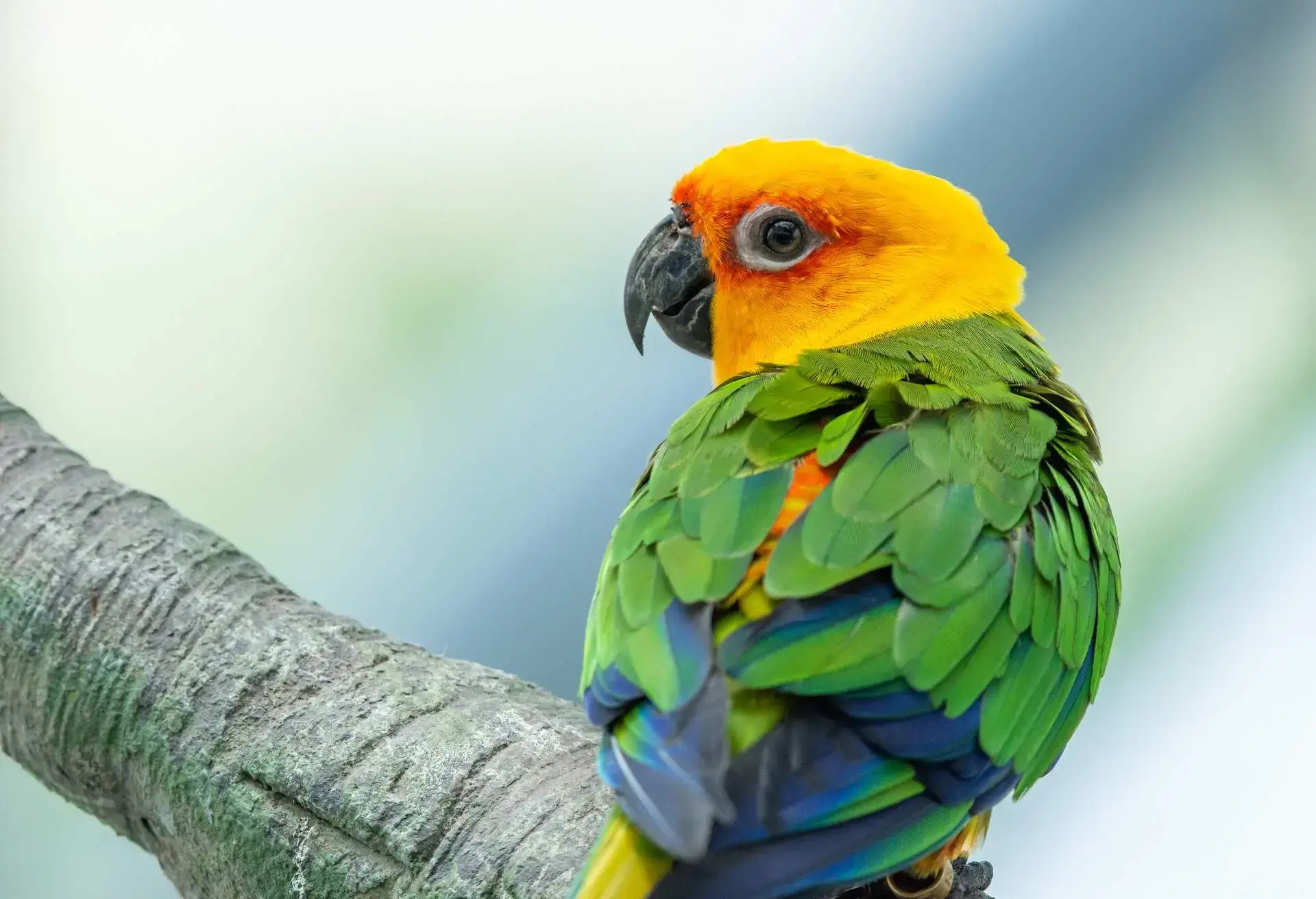
This is a cutting-edge building, both for its design and its purpose. It resembles an indented origami cube with a cylinder running vertically through the centre. The exterior is white and perforated with regularly-spaced holes. Two sides are half-open, revealing the bright turquoise cylinder inside.
What’s inside is really special. The glass cylinder contains an self-sustaining Equatorial rainforest ecosystem. You’ll find this remarkable place on Sheikh Zayd Road, in the City Walk designated area.
9. Dubai Frame
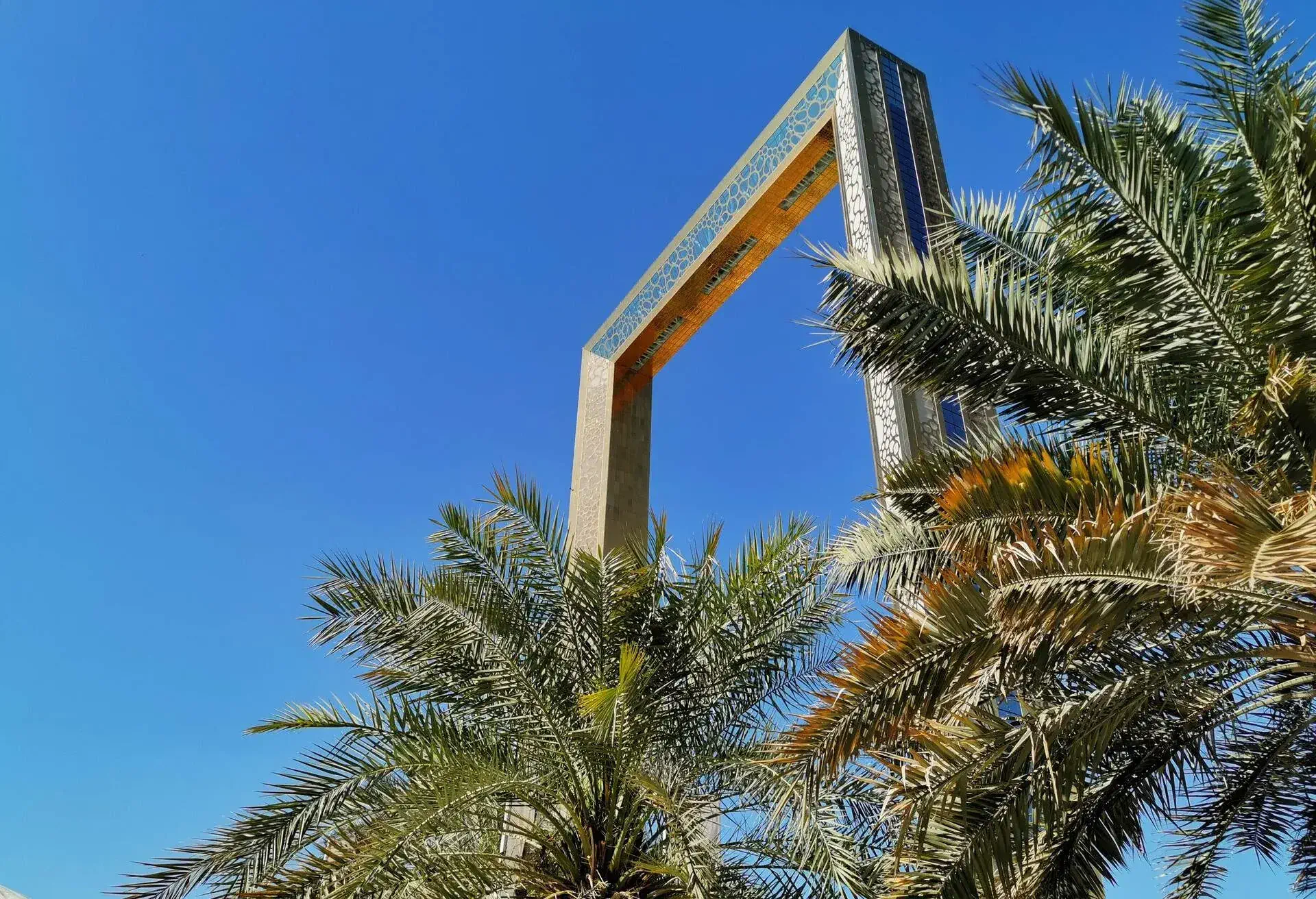
This is the kind of almost flippant indulgence that has made the architecture of Dubai such a strong tourist drawcard. The Dubai Frame is exactly what it says on the tin – one massive picture frame erected to frame the entire city.
Naturally, it’s the largest frame in the world, yet another record the architecture of Dubai can lay claim to. It’s quite something to see, with its stunning gold and blue design.
Antiquity to the left, modernity to the right
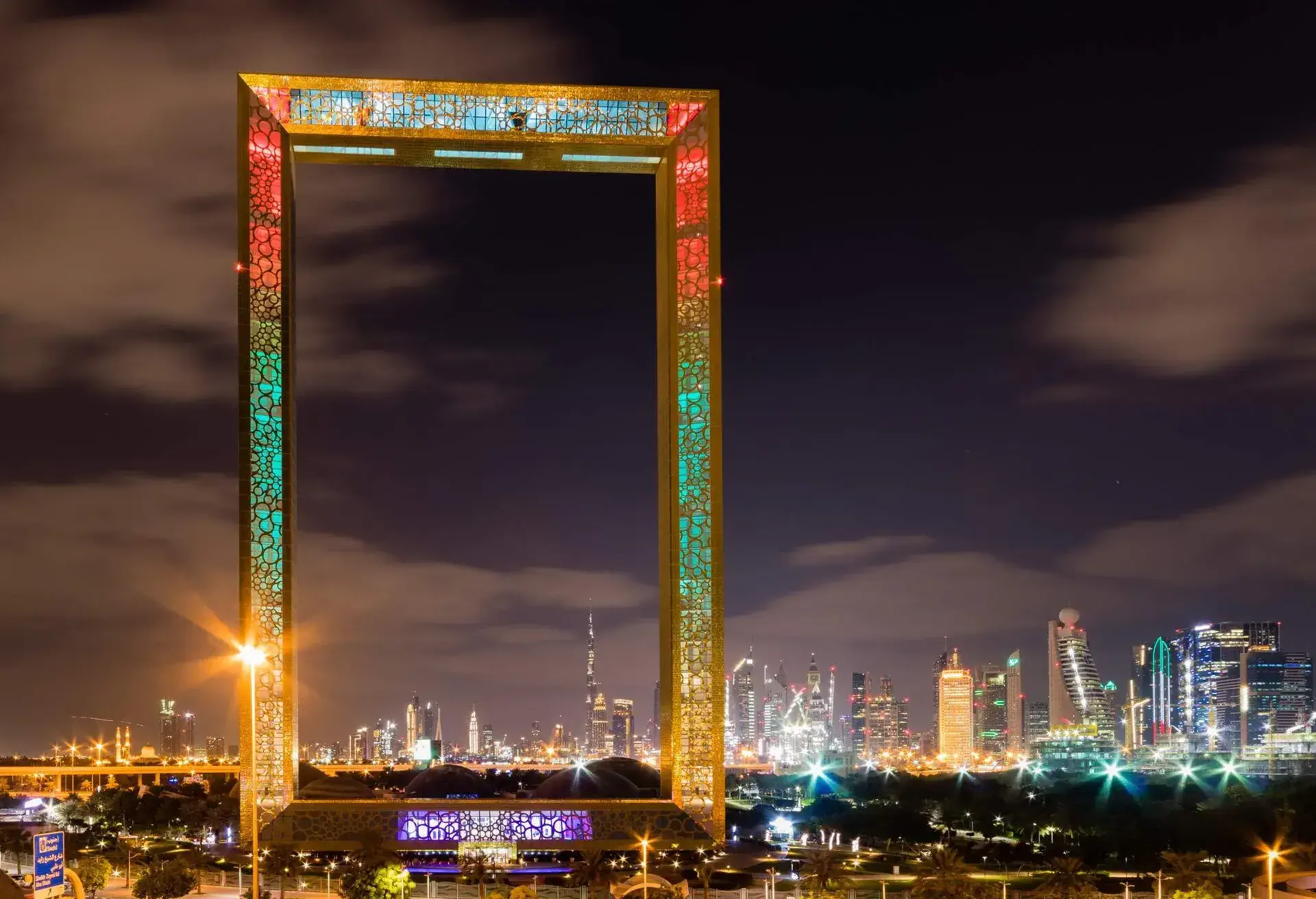
The horizontal top of the frame is an observation deck, positioned so that you have an equal view of old and new Dubai. The ground-level horizontal part contains a museum showcasing the city’s history. It’s situated in Zabeel Park, on the intersection of Sheikh Rashid Road and Sheikh Khalifa bin Zayed Road.
10. The Museum of the Future
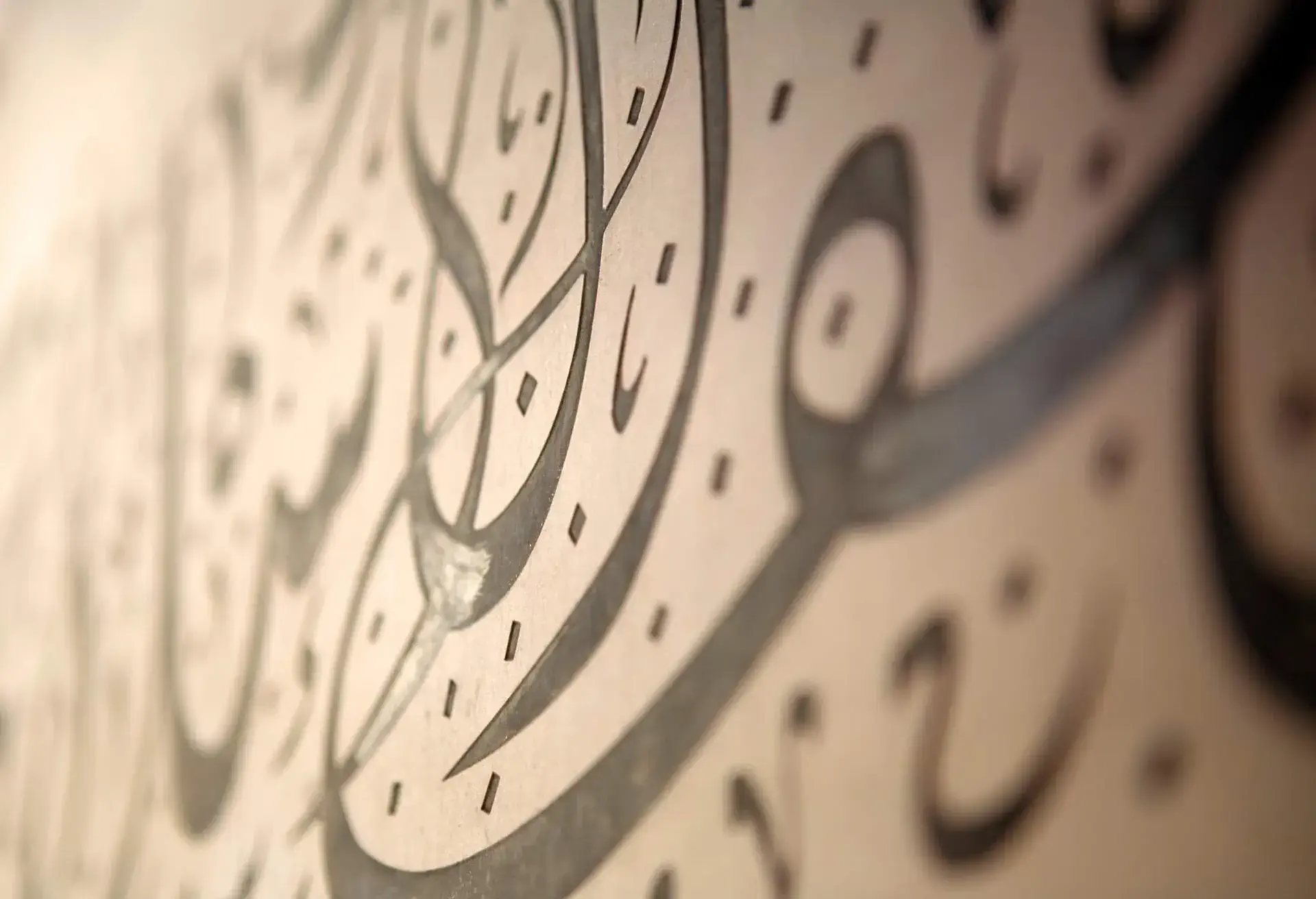
We’ve left the most advanced example of modern architecture of Dubai for last. The Museum of the Future was built using aviation engineering rather than architectural principles. It has a hollow elliptical shape, giving it the look of a slanted silver doughnut decorated with Arabic inscriptions.
Inside it showcases the latest trends in near-future technologies to look forward to, and explores new design themes. You can view these in its museum-like area, and buy themed merchandise at the attached shop.
Educating the citizens of the future
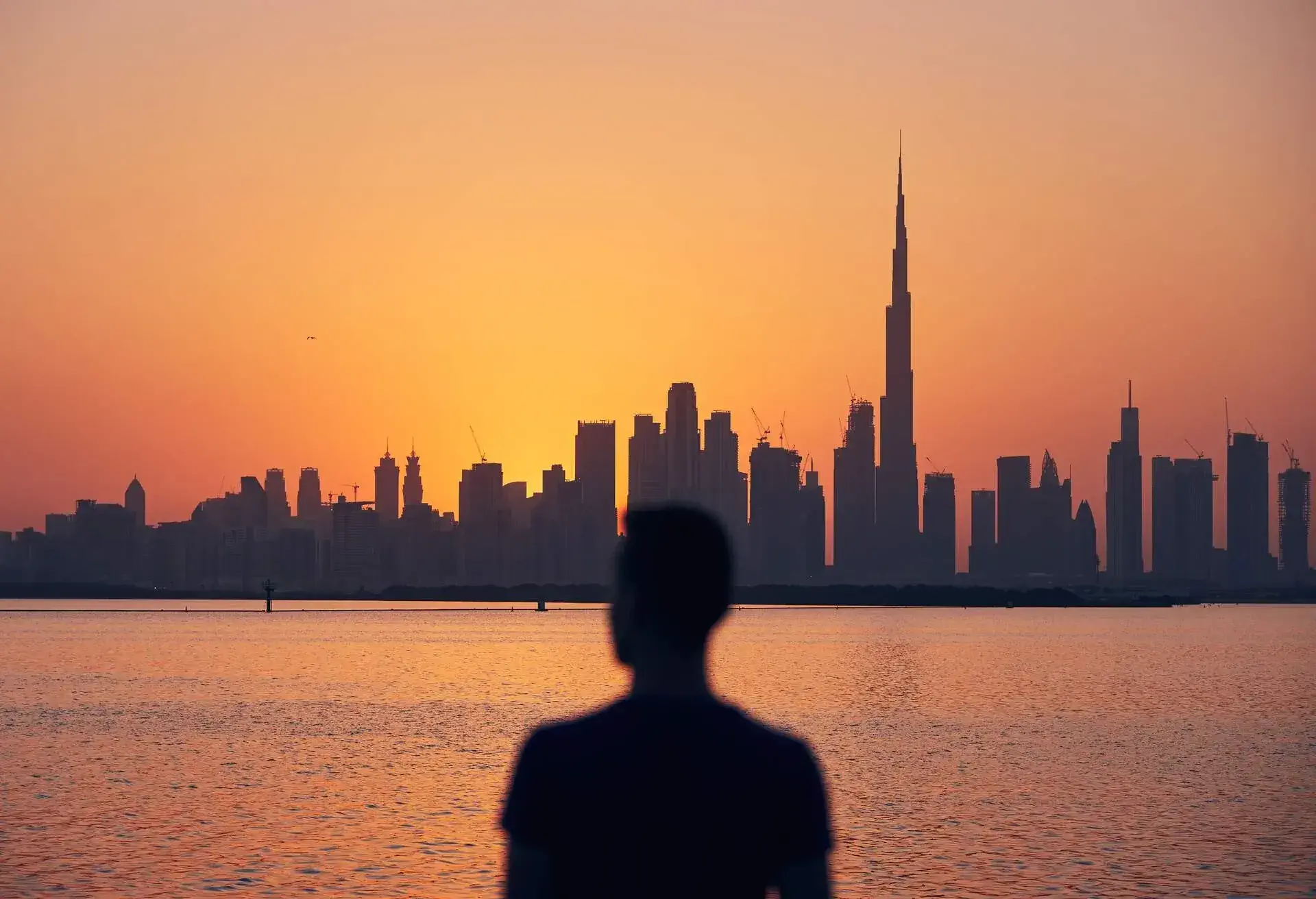
Other attractions include immersive futuristic virtual reality displays, and a fantasy world created for children. This also has an educational element aimed at developing digital skills. It’s next door to the Jumeirah Emirates Towers on Sheikh Zayed Road.
Excited for your next adventure? Our friends at Where to Go, produced by the team behind the award-winning DK Eyewitness travel guides, are here to help!
Each fortnight, hosts James and Lucy talk to local experts about the destination they have chosen to call their home, exploring their personal connection to the place, what makes it so special and the best things to see and do.
Listen to the podcast below for more inspiration and tips from Dubai:

